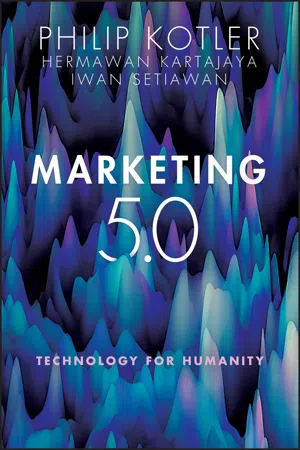Marketing
Behavioral Targeting
Behavioral targeting is a marketing strategy that involves using consumer data to deliver personalized advertising and content. It relies on tracking individuals' online behavior, such as their browsing history and search patterns, to tailor marketing messages to their specific interests and preferences. This approach aims to increase the effectiveness of marketing efforts by reaching consumers with relevant and timely content.
Written by Perlego with AI-assistance
5 Key excerpts on "Behavioral Targeting"
Learn about this page
Index pages curate the most relevant extracts from our library of academic textbooks. They’ve been created using an in-house natural language model (NLM), each adding context and meaning to key research topics.
- eBook - ePub
Ethics in Advertising
Making the case for doing the right thing
- Wally Snyder(Author)
- 2016(Publication Date)
- Routledge(Publisher)
5“Behavioral advertising”
Protecting consumer privacyAdvertisers should never compromise consumers’ personal privacy in marketing communications, and their choices as to whether to participate in providing their identity should be transparent and easily made.IAE Principle 6Ethics requires that we honor consumers’ privacy in the marketing of our products and services. The major area of concern, currently, is the practice of behavioral advertising, also called interest based advertising, where their preferences are collected—often without their knowledge—for targeting particular advertisements to them. Also, patients’ privacy needs to be protected in the marketing of drugs and medical procedures. We begin with behavioral advertising, better described as behavioral “targeting.”Ads are targeted to consumers via their computers according to the interests they express in online activities, such as search queries, ads they click on, information they share on social sites, products they put in online shopping carts, and comments they make in their emails. In addition “data brokers” are now collecting information from many other sources, including facial recognition technology (FRT) and other private sources, including “personally identifiable information” (PII), and putting the information together for business purposes.Collecting this data allows companies to direct more specific ads to consumers. This cuts down on advertising costs—and also elevates the effectiveness to consumers in getting more relevant ads. Yet, research shows that consumers fear that Behavioral Targeting infringes on their personal privacy. Also, consumers often are not aware that commercial information is being collected. A PEW research study found that 74% say it is “very important” to them that they be in control of who can get information about them; and 91% of consumers felt they were not in control of their private information. Some 86% have taken steps to mask their digital footprints, but many would like to do more.1 - eBook - ePub
The Retargeting Playbook
How to Turn Web-Window Shoppers into Customers
- Adam Berke, Gregory Fulton, Lauren Vaccarello(Authors)
- 2014(Publication Date)
- Wiley(Publisher)
Chapter 4 Smart Targeting: Reach the Right People at the Right TimeKNOW YOUR CUSTOMERS
When ad exchanges began to dominate the display advertising ecosystem, and cookie-based ad targeting started to mature, marketers were able to shift their focus from “what sites should I target?” to “which web users are most valuable for my brand?” The old playbook was thrown out, and a new breed of online advertising was born. This new approach is called online behavioral advertising (OBA). It relies on the cookie technology that we described earlier, but it is a much more granular and targeted approach.Marketing is all about reaching the right customers with the right message at the optimal time. OBA gives marketers a new toolset to do so. In order to accomplish this, a marketer needs to understand who his or her potential customers are, how they behave, and, ultimately, what it’s going to take to turn them into customers. This is something that good marketers have always known. But cookie-based tracking gave them the ability to build much richer profiles for their current customers and potential customers. Before you can act, you have to analyze, so the first step in building an effective retargeting strategy is to truly understand your customers.There are a number of tools that will help you learn about your customers. Analytics products allow you to identify purchase paths, analyze funnels, and identify trends. Most of them are centered around optimizing your website, pinpointing potential problem areas that are leading to drop-off points, or assessing marketing-campaign performance. Some of the more advanced tools allow you to see where customers are clicking or mousing with heat maps, which is valuable when trying to pinpoint intent signals. - eBook - ePub
- João Manuel R.S. Tavares, Brojo Kishore Mishra, Raghvendra Kumar, Noor Zaman, Manju Khari, João Manuel R.S. Tavares, Brojo Kishore Mishra, Raghvendra Kumar, Noor Zaman, Manju Khari(Authors)
- 2018(Publication Date)
- Auerbach Publications(Publisher)
This stage is fueled by web analytics to identify and solve the bottlenecks in optimized performance of site. The output helps in improving the structure and content of the website to fuel the conversion rates. Second, the advertisement allocation can be reallocated so as to attract the money-making customers.- Stage 3: Segment Targeting
This is the stage where behavioral analysis comes into play and remains an effective tool for stages 4 and 5. The optimization in stage 2 helps in converting the customers, but it needs more rectification as different groups of visitors have different goals when they visit the site. The behavioral analysis helps in identifying the important customer segments and the content required to convert these segments. Thus, this stage gives the following key insights.- – The customer segments that are most valuable, and grouping them is based upon the information gathered from their behaviors such as clicks. Content that is suitable for the target segment
- – Leveraging the insights of this stage in optimizing other communications
- Stage 4: Personalized Marketing (Online Channel)
To fuel Return on Investment this stage goes beyond group-level customization to personal-level customization. The BA is used to get information from the customers’ past and current behavior. The information is helpful in the following ways:- – It gives the most preferred channel of communication with the customer and also gives the contents liked by the customer.
- – The timing of messages that has to be sent for onboarding, cross-selling, or retention.
- Stage 5: Personalized Marketing (Cross-Channel) The behavioral analysis of cross-channel customers helps in devising strategies to engage with them across channels. The stage 4 output helps in this purpose to give the following insights:
- 2 According to the information available in my ad settings, Facebook currently lists hundreds of my alleged interests that influence what ads I will see, including: ‘Scandinavian design’, Office chair’, ‘Cloud computing’, ‘Soul music’, ‘Alaska’, and ‘Surfing’. While I sort of admit to liking how Facebook seems to ‘see me’, the granularity emerging from the accumulated set of data is creepily precise. Although I do not surf, I might indeed want to be a person who knows how to surf. Yes, I love Scandinavian design and Alaska is my dream vacation destination. These categories need not be reflective of my actual purchases, actions or hobbies. In fact, as John Cheney-Lippold argues, ‘you are rarely “you” online […] rather, we are temporary members of different emerging categories’ (2017: 4). What the detailed targeting options of Facebook advertising allow for, is not just the targeting of an already existing person but more importantly, the making up of people, as the philosopher Ian Hacking (1990) would say. In writing about the history of statistics, Ian Hacking (1990; 2007) offers the idea of ‘making up people’ as a way of thinking through the fabrication of categories of people in the service of managing populations, epitomized through institutionalized technological means such as census statistics. As Hacking suggests, ‘those kinds of people would not have existed, as a kind of people, until they had been so classified, organized and taxed’ (Hacking, 2007: 288). What this means is that the ‘personal’ is an emerging category based on ‘algorithmic identities’ (Cheney-Lippold, 2017) that are temporarily assembled to reflect and promote corporate goals (Kant, 2020). What counts is how good the algorithms are at extracting meaningful patterns from whatever explicit or implicit information users have provided and how well those patterns in turn map onto individuals’ dreams, desires or aspirations. As we will see in the next chapter, it was precisely the kind of psycho-demographic data reminiscent of the Facebook ad preference section that served as the basis for Cambridge Analytica’s profiling work.The turn to micro-targeting – the use of detailed demographic, behavioural and personal information to target specific attributes of people – and identity profiling in the ad industry was very much propelled by a combination of new technological methods and media-buying processes. As Joseph Turow explains in his book Daily You, digital advertising evolved through ‘digital fingerprinting’, including cookies, flash cookies, tracking pixels, Web beacons and mobile apps, and new media-buying processes based on new actors and systems that allowed for ‘buying’ individuals with particular characteristics, in real time (2012: 5). In particular, the ‘click’ and the ‘cookie’, Turow writes, became key mechanisms around which digital marketers and publishers planned their content strategies and digital futures. As the Web evolved into a free and open space (see Chapter 1 ), at least in terms of rhetoric and user expectation, publishers soon had to juggle with an environment in which people were not accustomed to paying, or willing to pay, for content. What followed were years of experimenting with new ad formats, including banner advertising, hot links, clickable ads, clickable banners and much more.Yet, of all the technologies besides the browser itself, the cookie ‘would do more to shape advertising – and social attention – on the Web than any other invention’ (Turow, 2012: 48). Cookies are memory devices that track and remember a user’s browsing history. Cookies are basically small pieces of data used by Web servers to track and monitor information relating to various ‘states’ (e.g. items added to a shopping cart, logins, clicks and visits to websites) and stored locally on the client computer by the Web browser. For advertisers, cookies proved revolutionary insofar as they allowed them to measure clicks and user behaviour beyond a single website. As Turow notes, savvy marketing entrepreneurs realized that by placing cookies across sites, they could learn what individuals did after visiting one site and thus serve more targeted ads. Moreover, ‘data about what the cookie owner learned about the individual could be added to the cookie and revenues could be shared with all participating sites’ (Turow, 2012: 55).
- eBook - ePub
Marketing 5.0
Technology for Humanity
- Philip Kotler, Hermawan Kartajaya, Iwan Setiawan(Authors)
- 2021(Publication Date)
- Wiley(Publisher)
An even more accurate method is behavioral segmentation, as it retrospectively groups customers based on actual past behavior. The behavioral segments may include names that reflect purchase frequency and amount, such as “frequent flyer” and “top spender.” It can also show customer loyalty and depth of interaction with names such as “loyal fan” or “brand switcher” or “first-time buyer.”The techniques are highly meaningful as the segments precisely reflect clusters of customers with different needs. That way, marketers can tailor their strategies to each group. Psychographic and behavioral segmentation, however, is less actionable. Segments with names such as “adventure addict” or “bargain hunter” are only useful to design advertising creative or pull marketing. In push marketing, however, it is harder for salespeople and other frontline staff to identify these segments when they meet the customers.Segmentation should be top-down and bottom-up. In other words, it should be both meaningful and actionable. Thus, it should combine all four variables: geographic, demographic, psychographic, and behavioral. With psychographic and behavioral segmentation, marketers can cluster customers into meaningful groups and then add the geographic and demographic profile to each segment to make it actionable.Developing a Persona
The resulting brief fictional depiction of a customer segment with all four variables is called a persona. Here is an example of a persona:John is a 40-year-old digital marketing manager who has 15 years of experience and currently works for a major consumer-packaged-goods company. He is responsible for designing, developing, and implementing marketing campaigns across digital media and reports to the marketing director.The director measures John's performance by the overall brand awareness and online conversation rates in e-commerce channels. Aside from striving to improve performance based on the metrics, John is also highly cost-conscious and believes that digital marketing spending should be as efficient as possible.




